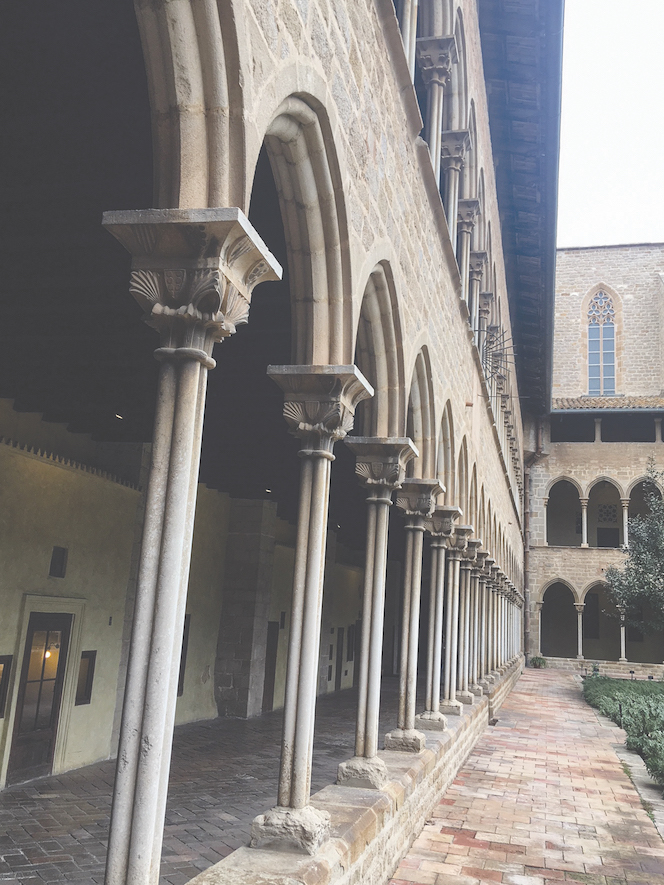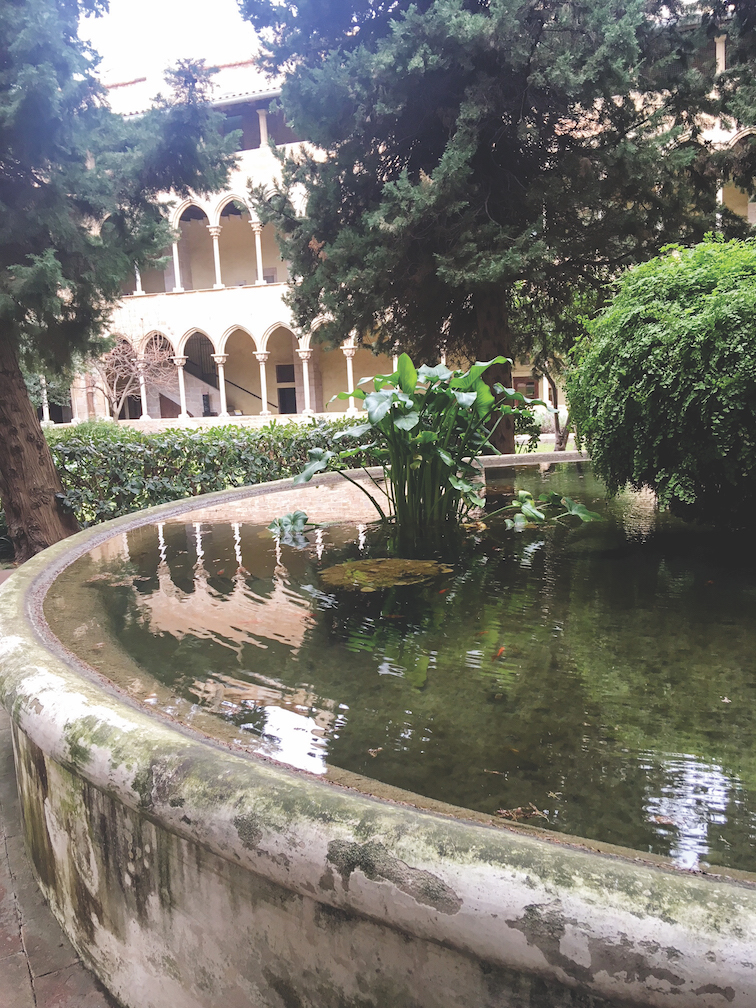In Barcelona, this elegant 14th-century work of art survives

A cold wind was blowing off the Mediterranean as a bright yellow taxi streaked through the gloom of a winter’s day in Barcelona in Caledonia, Spain. This was late January, and the taxi was ferrying this solo traveler from the central Eixample district through what seemed to be suburb after suburb to the Reial Monestir de Santa Maria de Pedralbes.
I walked up a short steep road, through a familiar-looking massive gate, and into the garden of what has been called the most beautiful Gothic cloister remaining in Europe. The nuns of the Sisterhood of the Clares moved in on May 3, 1327. Some modern sisters live there still.
The monastery was founded by Queen Elisenda de Montcada, who chose the site (and whose remains lie in the monastery church). She was supported in this effort by her husband King James II (Jaume II), who dedicated the Monastery to Saint Mary.
The area of the tidy homes around the monastery was once the village of Sarrià, which was, in the 14th century, far outside the city’s walls.
Well, now you have the basics — who, what, and where. But the why? Perhaps the queen wanted to exhibit her piety and expand her political power.
I felt in a bit of an architectural quandary. Why was the gate familiar? Why did the cloister (the organizing structure of the whole monastery) send my mind to Santa Barbara, California? And why did the “Gothic” descriptor of the cloister seem too facile?
To borrow and extrapolate from British garden historian Christopher Thacker, the history of gardens and architecture is like the study of icebergs — a bit shows above the surface, yet much more lurks underneath.
Of course, the Spanish military marched up from Mexico into California and New Mexico at the end of the 16th century… and that’s why the exterior wooden gate on my own courtyard in Albuquerque resembles the large-scale one at the monastery, and why the architecture of Santa Barbara looks the way it does, inspired as it was by the early 20th-century Spanish Colonial Revival.
I will stop here and give a word of gratitude for leaving my comfort zone and seeing the world afresh — that is, seeing my ignorance, that deep iceberg.
Spanish Gothic architecture in its Catalan iteration resulted in a number of extant and beautiful buildings in Barcelona — among them the stunning Santa Maria del Mar, built between 1329 and 1383.
But those graceful arches, with their slender columns at the Monestir de Pedralbes — I could sense the elegant beauty of Islamic architecture and design, though this may be a minority opinion. (Islamic occupation of the Iberian Peninsula, more or less, lasted from 711 to 1492; in Catalonia, the occupation began in 718 and ended in 801.)

Now back to those sisters. The monastery, under the patronage of Queen Elisenda, attracted daughters of the wealthiest and most powerful Catalan families; it was a way those families could serve the Queen. They brought substantial dowries and cultural capital. The monastery’s museum is a showcase of this treasure.
The monastery’s noble women (who wore white; the worker-nuns wore black) cloistered here also brought furniture, as was the custom in secular marriage; these women did not lose their power and comfort.
Furniture, especially seating, was a marker of wealth and social standing: “She’s brought a chair” is a phrase still used in the Empordà region of Spain to indicate the bride has status.
The monastery survived the Spanish Civil War (1936-1939) as the anti-clerical Republicans and Anarchists of Barcelona considered it a work of art, and they left it alone.
By Paula Panich
Category: Entertainment







